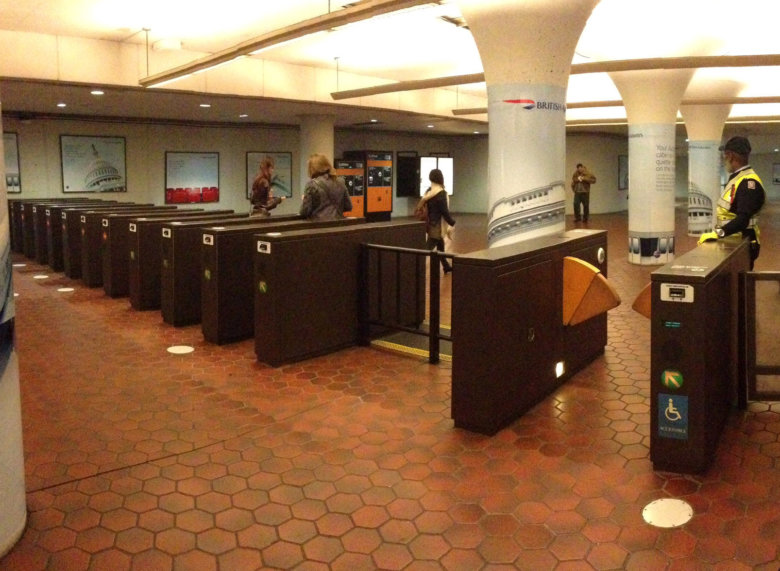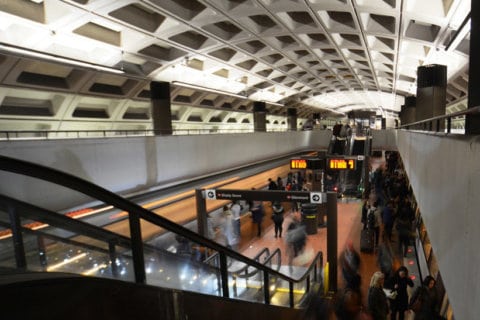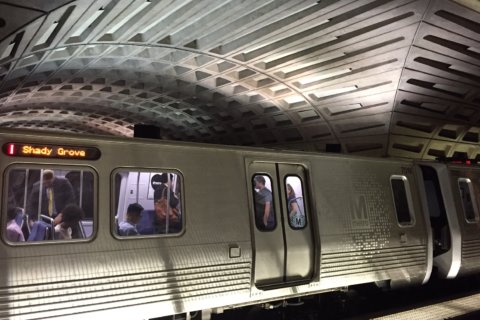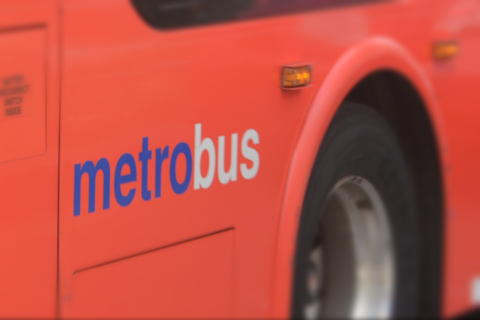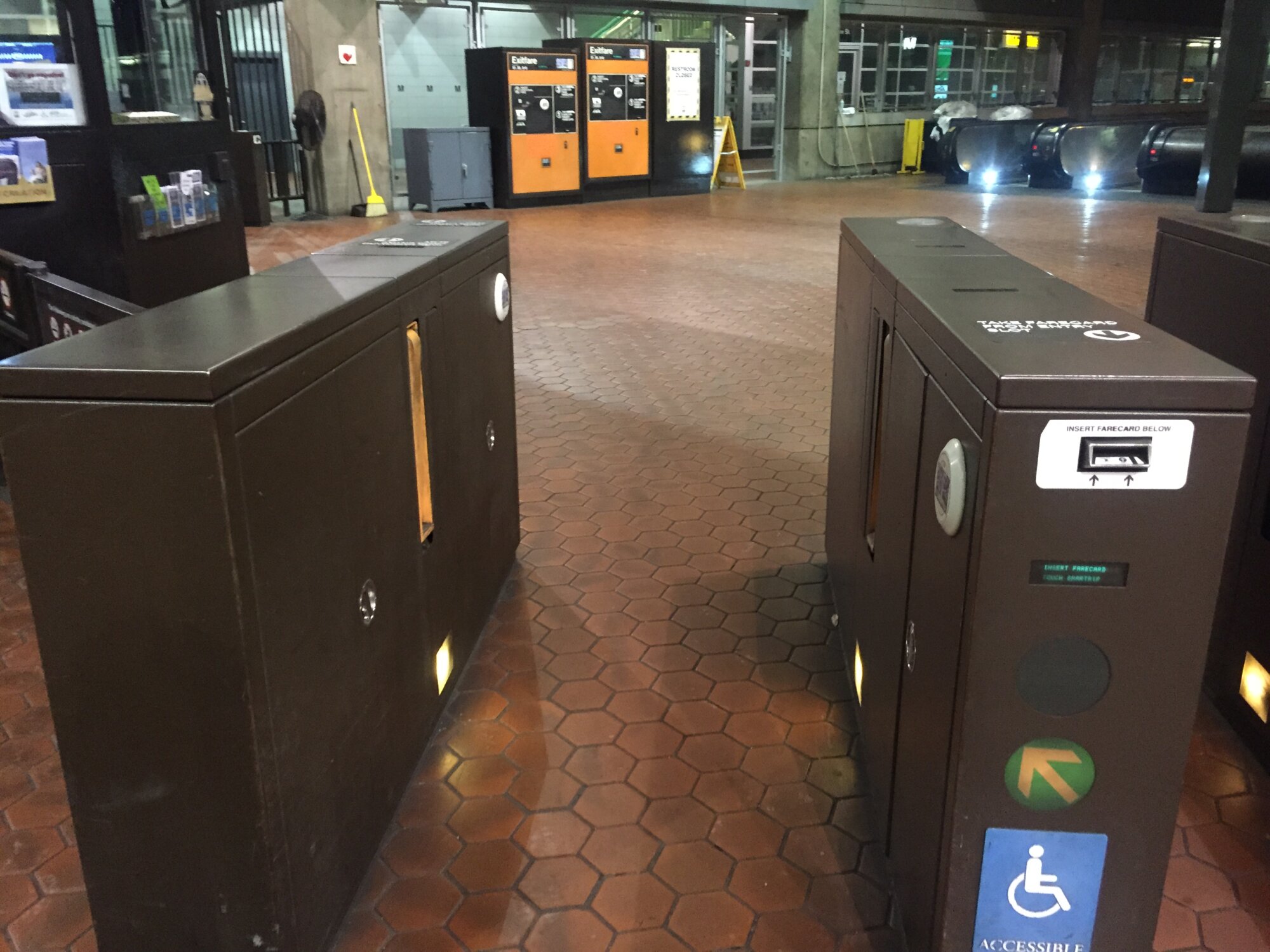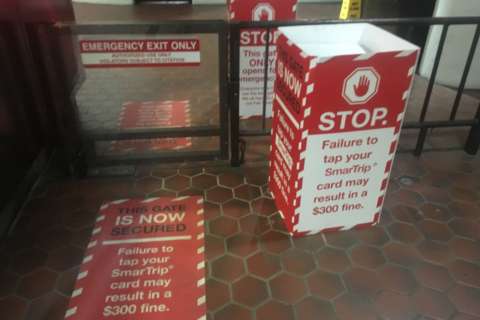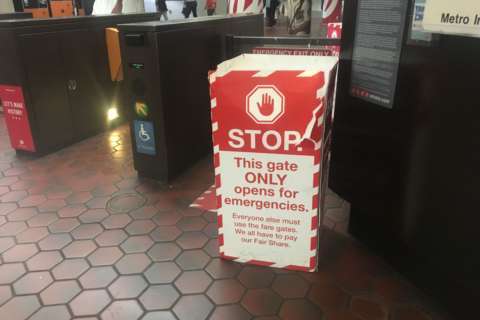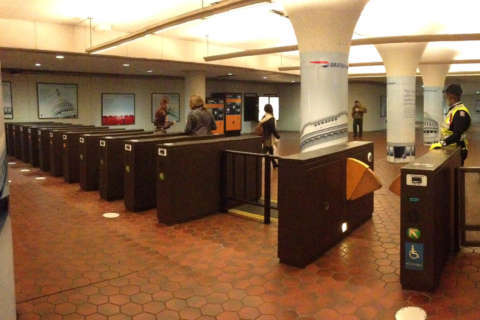
Metro’s new fare gates set to start rolling out next year include changes the agency hopes will help address a key priority: cutting down on people skipping out on paying fares.
Under a contract awarded last month, pilot testing of the new gates is due to start in November 2020, with rollout across the rail system beginning in January 2021.
The new fare gates require communication and power upgrades at stations, which have pushed the timeline back somewhat.
SmarTrip cards will continue, and Metro hopes to include cellphone-based payment, too.
Designs involved close coordination with Metro Transit Police, Metro Chief Operating Officer Joe Leader said. Among the changes from the current system: Fare gates and adjacent railings would be harder to jump over, and would not stay open for as long in order to prevent one person from
following directly behind someone who tapped their SmarTrip card.
The new design is prompting concerns from some riders with mobility challenges though.
Phil Posner, who chairs Metro’s Accessibility Advisory Committee, said the group did not see mock-ups of the fare gates as they did during Metro’s last effort to change the payment systems.
The last effort was canceled in 2016 after a limited $25 million pilot.
“Historically, when new fare gates have come in, they have given us information and brought in mock-ups,” Posner said.
If the amount of time the gates are open must be changed, Posner suggested programming the gates to stay open longer for people using a MetroAccess pass or senior SmarTrip card, or to at least keep the wider, accessible gates open longer to also accommodate people with larger bags or strollers.
He hoped any issues can be addressed up front in the design rather than requiring later fixes, as riders saw with the 7000 Series rail cars.
Fare evasion concerns
Metro estimates it is losing $36 million per year from people who ride but do not pay on rail and bus, with the number of people not paying increasing sharply over the last four years.
A June 2017 paper based on the bus system in Santiago, Chile, concluded that a 10% increase in fares raised fare evasion by 2 percentage points.
Metro raised bus fares 14% in 2017, from $1.75 to $2.
All of Metro’s numbers are estimates now, but Metro is planning to install new tracking technology on rail fare gates that can at least count the number of people passing through without paying. Metro has similar technology installed on buses.
Metro has now locked the emergency swing gates at 45 stations, with plans to lock the gates at 37 more by the end of winter.
This fall, Metro plans to start putting video screens at 13 station entrances so riders know they are being watched.
The first screen is planned at Gallery Place, with the other 12 stations getting the screens by next summer, mainly at locations where elevators go directly to or from the platform.
On the bus, Metro collects data on locations where fare evasion is most common. The highest percentages of fare evasion are recorded in D.C. and Maryland; Virginia’s numbers are much lower.
Enforcing the rules can be a challenge.
Metro Transit Police have yet to implement a civil fine process provided by a D.C. law that took effect this spring.
Previously, those who jumped over a Metro fare gate or avoided paying on the bus would face arrest or jail time and a fine of up to $300.
Supporters of the decriminalization of fare evasion argued that the criminal penalties disproportionately affected African-Americans.
“We also have the very real issue of the impact on persons of color, other marginalized communities,” Arlington County Board Chairman and Metro Board member Christian Dorsey said.
He hopes for a middle ground that can address Metro’s financial concerns — and avoid the extra burden on other riders and taxpayers — while not creating something overbearing.
“We shouldn’t fall into the trap of believing that it’s simply you do everything from an enforcement perspective or you do nothing,” Dorsey said.
One idea would be jurisdictions paying for discounted passes or free rides for their low-income residents.
“We need to understand why people evade fares,” Dorsey said.
International research on the issue has found various “types” of people who do not pay, ranging from those who do it accidentally when they do not have cash to add to an empty card, to those who do it repeatedly and deliberately.
Some of the research also found frustration about poor service or high fares can be a driver, and fare evasion can snowball as riders see others getting away with it, so providing better service or easier payment systems can reduce fare evasion.
A survey in Belgium for a paper published last year found younger riders and male riders were most likely to fail to pay.

